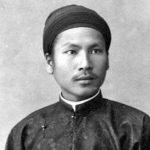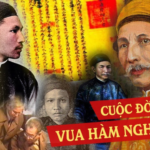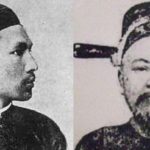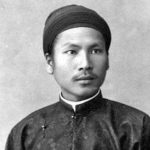When it comes to emperors, everyone thinks of the king sitting high on the golden throne, ruling and governing the country. However, it’s not that easy for everyone. Historically, there was only one Vietnamese king who lived nearly 60 years in Africa, engaged to a foreigner, and became an artist.
Who is King Ham Nghi?
King Ham Nghi’s real name is Nguyen Phuc Ung Lich, the fifth son of Kien Thai Vuong Nguyen Phuc Hong Cai. From a young age, he lived in poverty with his mother, unlike his two brothers who lived in the palace as King Dong Khanh and King Kien Phuc.
When King Kien Phuc passed away, Ung Lich ascended to the throne and took the regnal name Ham Nghi at the age of 14.
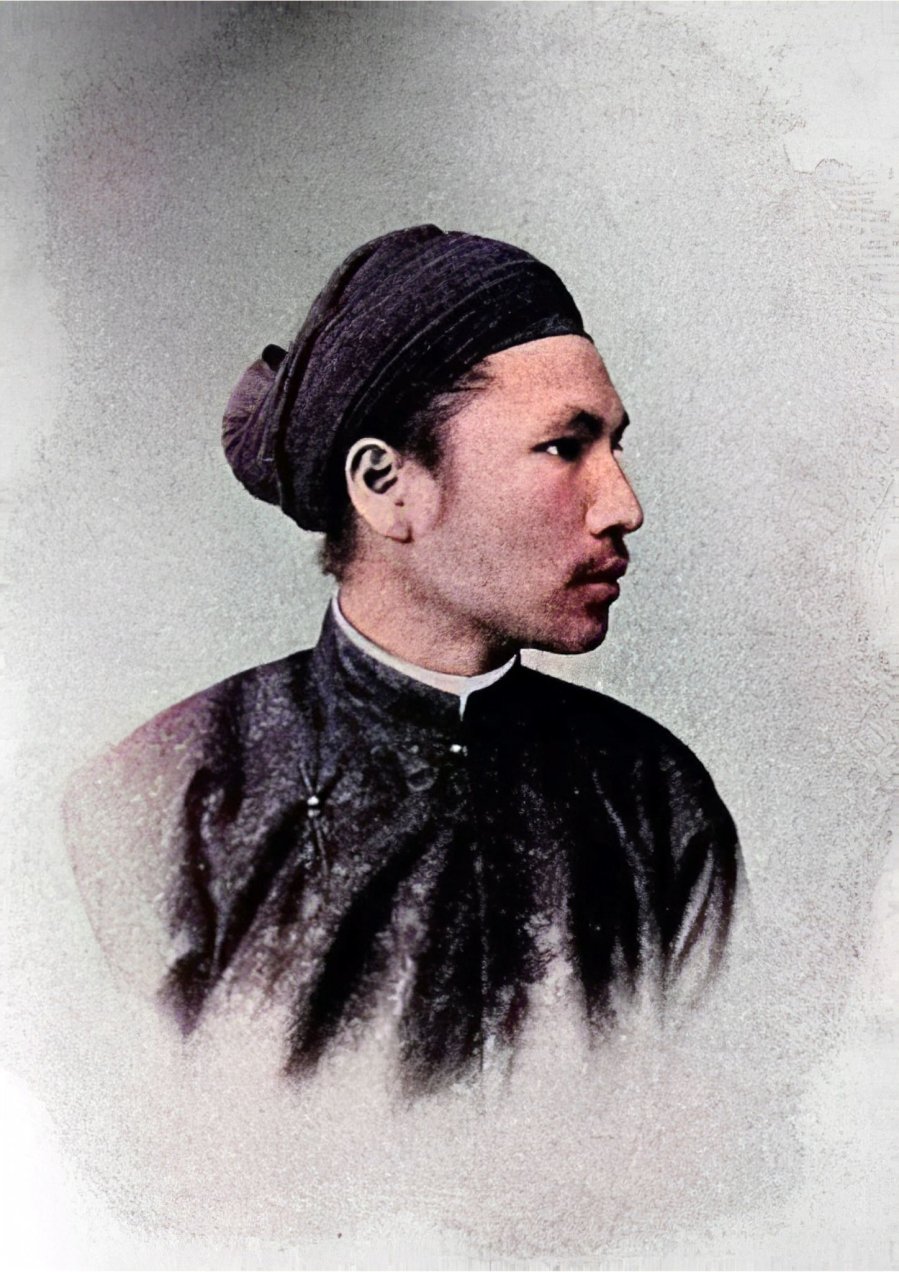
King Ham Nghi
The only Vietnamese king who lived nearly 60 years in Africa
In 1884, King Ham Nghi was brought to the throne by the regents Nguyen Van Tuong and Ton That Thuyet when he was 13 years old. After the fall of Hue capital in 1885, King Ham Nghi was taken by Ton That Thuyet to the Tan So forest. There, the king issued the Can Vuong edict, calling on scholars and farmers to rise up against the French for independence. Due to the large response from the people, the French captured King Ham Nghi. On November 25, 1888, he was taken down to the ship and sent to Lang Co. On the afternoon of January 13, 1889, the king arrived in the capital of Algeria, Alger.
In 1904, Ham Nghi got engaged to Marcelle Laloe (1884-1974), the daughter of Mr. Laloe – the Chief Justice of the Alger Supreme Court. Their wedding became a cultural event of the capital. King Ham Nghi and his foreign wife Marcelle Laloe had 3 children together, including 2 princesses (Nhu Mai, Nhu Ly) and Prince Minh Duc. Among them, Princess Nhu Mai graduated as an agricultural engineer. Princess Nhu Ly has a Doctor of Medicine degree and married Duke François Barthomivat de la Besse.
At the beginning of his time in Algeria, the king refused to cooperate in learning French. The French authorities regarded King Ham Nghi as a dangerous figure. Contrarily, the colonial protectorate authorities in Algeria found the king to be gentle, friendly, and amiable, so they loosened control over him. Afterwards, through contact with a missionary, King Ham Nghi began to learn French and was introduced by the interpreter Tran Binh Thanh to meet the painter Marius Reynaud. From then on, he was guided in Western painting.
However, at that time, the French had tailor-made royal clothes in royal shops in the French style and forced King Ham Nghi to only wear that style. They took photos of the king wearing French-style royal clothing and sent them back to Annam. The colonial government at that time wanted the photo to convey the message to the people that the venerated king had truly submitted to the French.
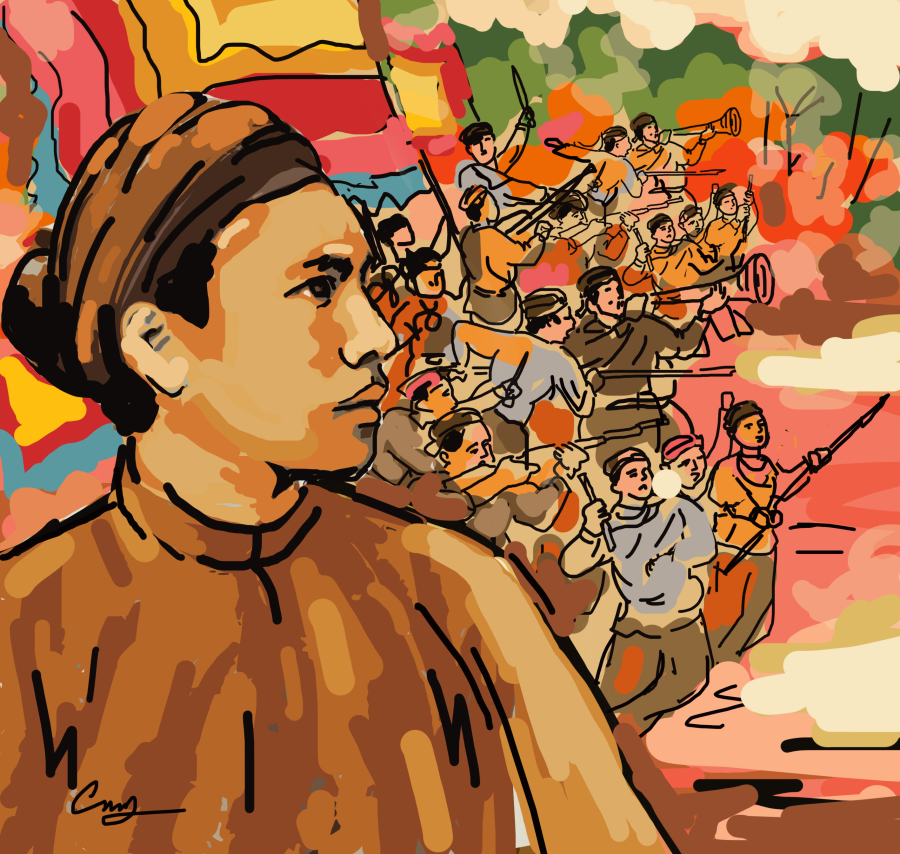
King Ham Nghi was not only a patriotic king who always looked toward his roots and wore national costumes, but also a talented artist with many outstanding artworks
In 1896, in the midst of being forced in many ways, King Ham Nghi created his first self-portrait using charcoal. The portrait was drawn from a photo taken when the king had been in exile for a few years, and the costume in the photo still represented the pure Vietnamese royal style. Afterwards, he made multiple prints of this portrait and gave it to the people he met, like a visiting card according to the customs at that time, but the main purpose was to say: “I am still the king of An Nam and the French cannot conquer the love of the country, the national pride of a king like me.”
The king also sent these two visiting cards to Cochin China for resident General Rheinart and Governor-General Richaud. In these cards, he signed them himself and called himself “The fighter against the French”.
Dr. Amandine Dabat believes that King Ham Nghi’s actions provided the public with a new perspective on him – not only as a patriotic king who always looked toward his roots, always wearing national costumes, but also as a talented artist with many outstanding artworks, especially in the field of painting. Although there were upheavals in his time and he had to live among foreigners until his death, what the king was able to accomplish during his reign will always be the pride of future generations.


























